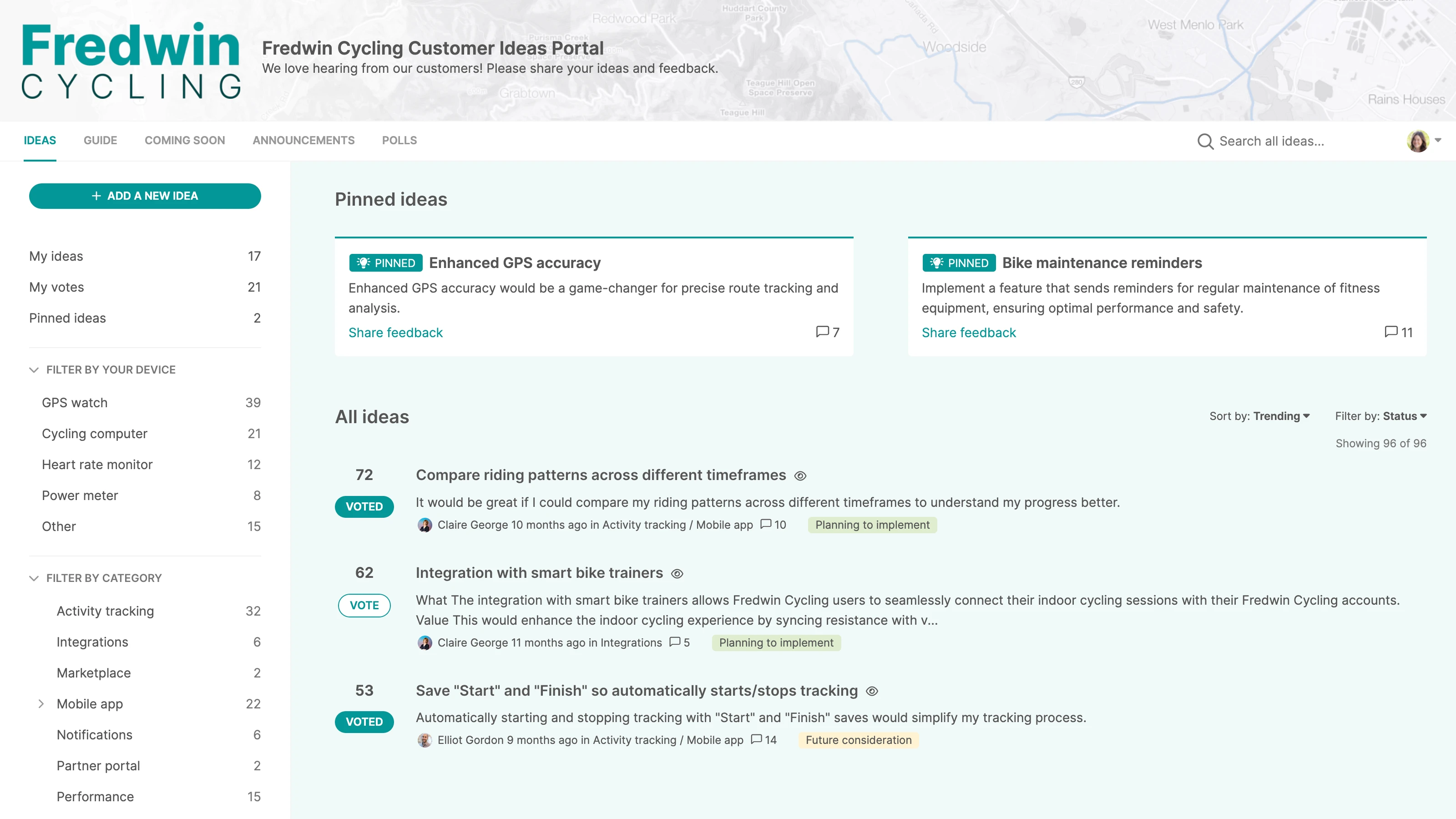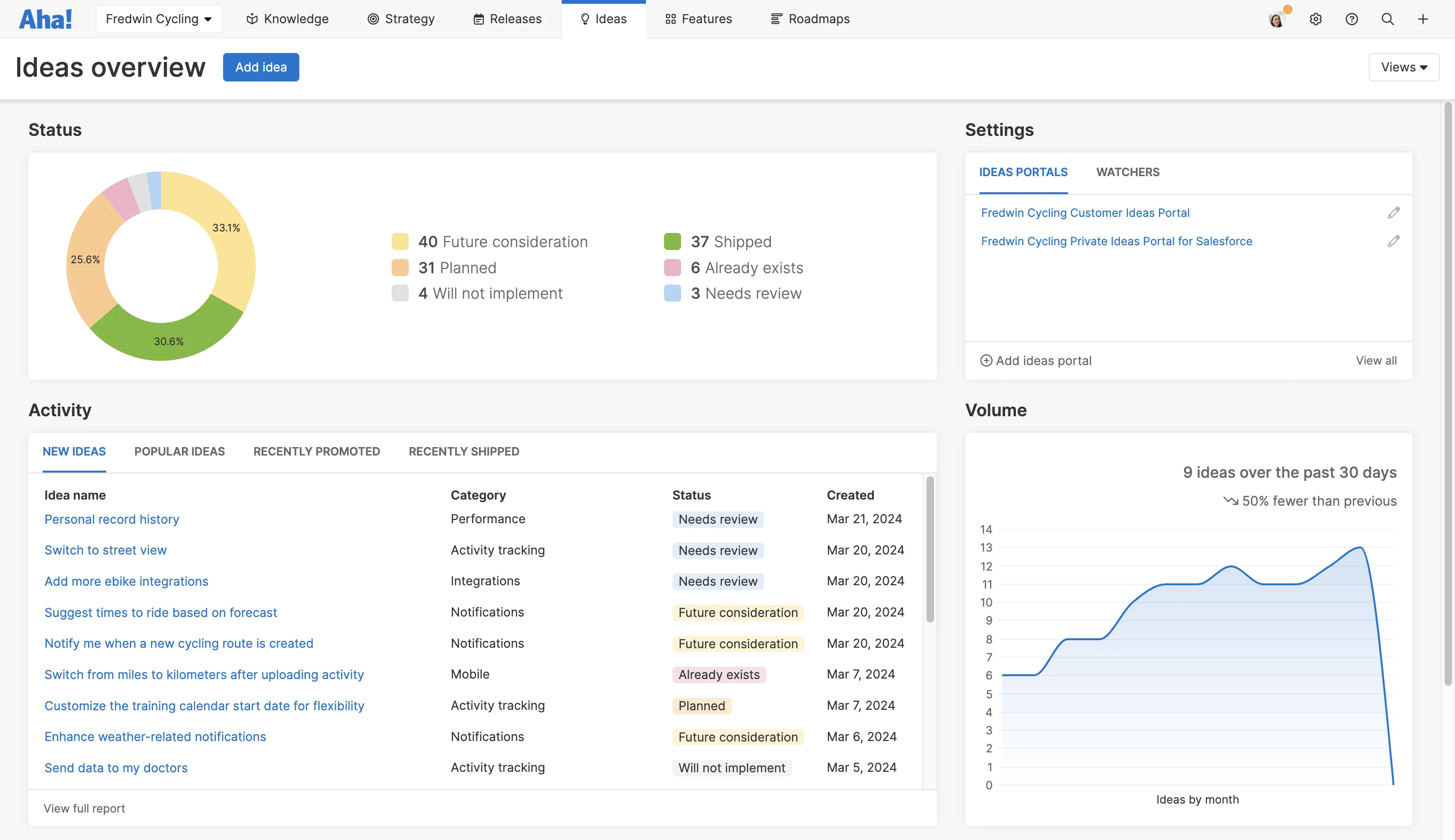What is idea management?
Capture, evaluate, and prioritize the best ideas with strong idea management
Last updated: February 2025
Idea management turns scattered feedback into focused product decisions by helping teams capture, evaluate, and prioritize the ideas that matter most. See why structured idea management is essential, who owns it, and how to build a repeatable process that aligns customer and teammate insights with product strategy. |
Are you wondering whether The Aha!
Great ideas fuel innovation. But collecting a bunch of ideas is not the same as delivering real value. To build products customers love, you need a way to gather, assess, and act on ideas that align with your strategy. That is where idea management comes in. Idea management helps you capture insights, evaluate opportunities, and prioritize what matters most.
Anyone (customers, teammates, and partners) can contribute ideas, so making it easy for them to share is essential. But not every idea is created equal. The real work happens as you sort and prioritize the most relevant ones. This allows you to focus on enhancements that truly improve the product experience or even spark something entirely new.
Capture ideas and drive innovation using Aha! Ideas. Try it for free.

This is an example of an ideas portal created through Aha! Ideas. Many of the basic capabilities in Aha! Ideas are also available in Aha! Roadmaps.
This guide covers the fundamentals of idea management — from why it matters to how you can build a structured process. Feel free to skip ahead to any of the following sections:



